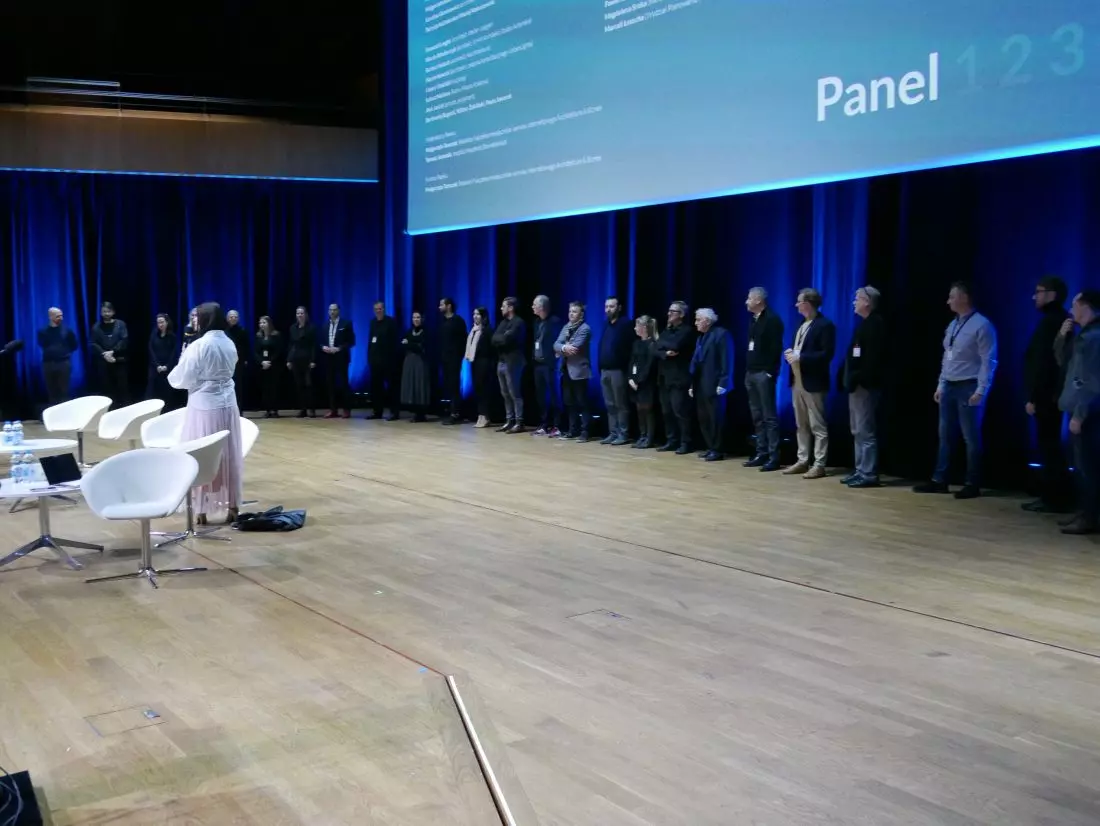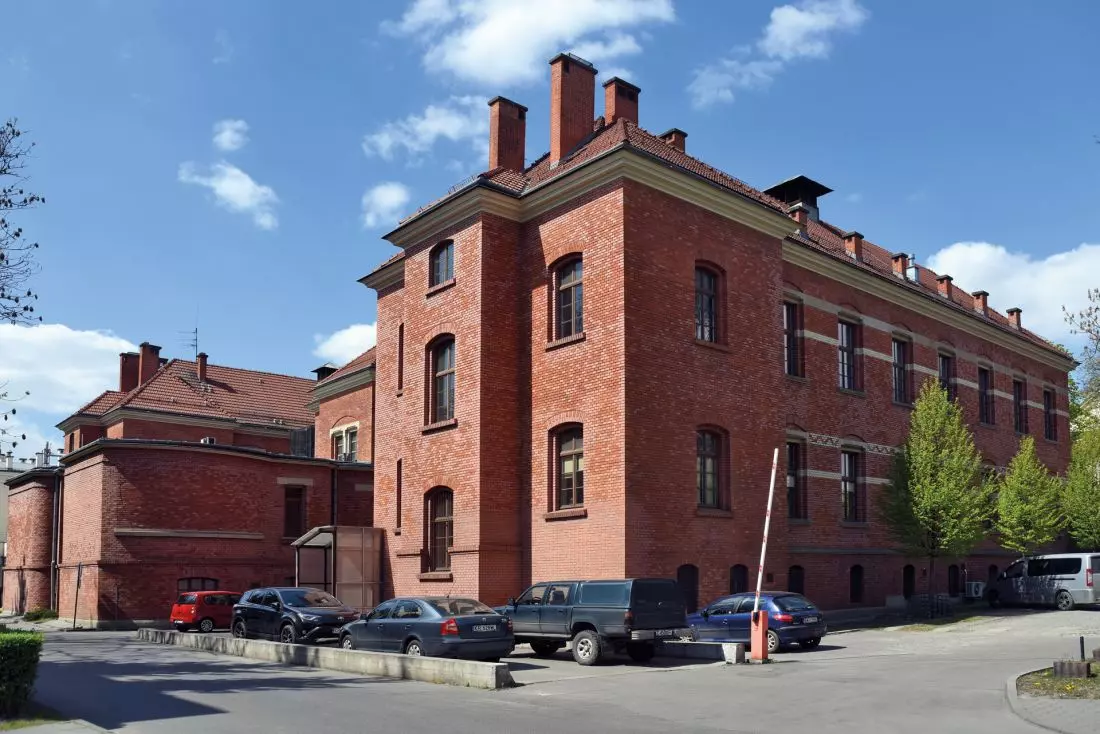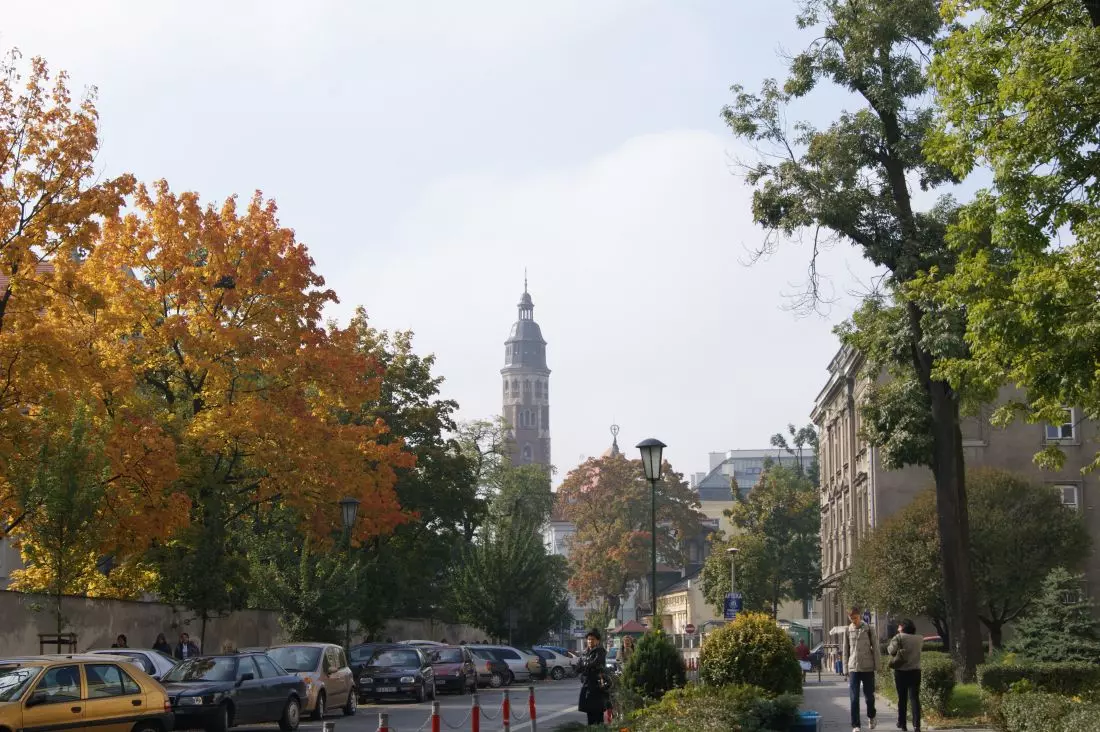In early December, the Cracow City Council passed the Local Area Plan for the Wesoła district. The plan is far from ideal, and few are satisfied with it. Urban planning workshops on Wesoła at the International Architecture Biennale Krakow 2021 unequivocally proved that the MPZP in this form will do more harm than good, that it should not be rushed with its adoption, but these voices were ignored. After the planning process was completed, a competition was announced. The problem is that it is not clear what it is supposed to be about - officials are formulating divergent visions.
A local plan for Wesoła
The future of the Wesoła district, as mentioned above, was the subject of a workshop at this year's International Architecture Biennale in Krakow. For two and a half days, three groups consisting of architects, urban planners, local government officials, sociologists, students and academics created their own concepts for the vision and organization of the Wesoła district. The MBA was co-organized by Architecture & Business. You can read about the results of the work and discussion in the latest issue of A&B (e-issue available for free).
On December 1 this year, the final shape of the MPZP for the Wesoła district was passed at a session of the Krakow City Council. So, more than a month after the Biennale workshop. The planning process had been going on since 2017. Three hectares of the nine bought for about 290 million by the City Hall are to be, by design, devoted to public greenery. According to the plan, this amounts to about 50 percent of the total area, But this is only a theory - the green spot drawn on the MPZP - ZP (public greenery) enters on the eastern side of the existing and used buildings of, among others, the Infectious Diseases Clinic.
The International Architecture Biennale in Krakow, during which the Wesoła district was widely discussed
photo by Lubomir Nikolov
Some elements seem incomprehensible. For example, the planning on the MPZP of green areas in the place where the Infectious Diseases Clinic now stands. It's unclear who would introduce a green area there, especially since it remains the property of the University Hospital, says Pawel Halat, a city activist, chairman of the board of directors of the Space-People-City Association, and a participant in the workshop at the Krakow Biennale.
The plan also raises other objections, which were formulated explicitly during the workshop. They concerned, among other things, the connection between Wesola and Aleje Powstania Warszawskiego and the reorganization of the district. Instead of a single square with the so-called Galician Market, a system of dispersed public spaces and urban interiors was proposed.
The workshop held at the Biennale included a demand that work on the MPZP be halted, since the city is the majority shareholder in these areas. Above all, the plan lacks full consideration of what emerged at the public consultations, among other things: - rethinking the issue of greenery and the Galician Market, the concrete square in the heart of Wesola," according to Krakow City Councilor Lukasz Maślona, a participant in the Krakow Biennale workshop.
Paweł Hałat adds:
The biggest advantage of the adopted plan is that it covers areas that do not belong to the city. This allows for a broader view. Unfortunately, the plan has disadvantages, resulting perhaps from the desire to reconcile different interests. During the Biennial, in our workshop group [Group I - Wesoła Health Resort - editor's note] we pointed out too much focus on the square, instead of the district as a whole. This makes it all the more puzzling whether this plan is needed at all?
Doubts were also raised by the Krakow Ambulance Service. According to the MPZP, the place where the Ambulance Service services and disinfects ambulances is to have a road connecting St. Lazarus Street with the city square, the so-called Galician Market, to be built there. If the lord's provisions are enforced and the road is built, the Ambulance Service will be in trouble.
What's in store for Wesola?
The much-criticized Local Land Use Plan will form the basis for future development of Wesola. The city has begun the first adaptation work. At the moment it is known that Wesola will house the headquarters of the Krakow Library. The project for the adaptation of the buildings at Kopernika, 15, 15a and 15b streets was selected in a tender, which was won by the Kontrapunkt studio. The question arises why an architectural competition was not announced for such an important object of a municipal public institution? This is completely incomprehensible, given the scale, stature and prestige of the Library. Can we imagine Katowice without the Library of the University of Silesia, designed by HS99, Poznan without the Raczynski Library, designed by JEMS Architects, or even Warsaw without the BUW, designed by Marek Budzynski (architecture) and Irena Bojarska (greenery)? And these are just the first examples of cities that have received high-quality library space thanks to architectural competitions. Cultural institutions require architectural competitions. Other Polish cities already understand this, Krakow still does not.
Currently, a temporary exhibition "Toy Clinic" organized by the Toy Museum is taking place in the so-called small library at 15A Kopernika Street. The Krakow Festival Office, which organized a three-day festival on Wesola in the summer, is also to appear next to the Krakow Library. The KBF would be located in a building at 21 Kopernika Street, in the so-called Red Surgery. Only one company took part in the tender for medical operations in the building, which withdrew from signing the contract. Talks about KBF's entry into Wesola are still ongoing.
The building at 21 Kopernika Street, the so-called Red Surgery
photo by Tomasz Kiełkowski ©Archifoto
The University Hospital is still operating in part of the buildings. The process of moving the Hospital out of the still-unoccupied buildings, according to Jan Pamula, president of the Krakow City Development Agency, may take as long as 2030. Pandemic considerations are the main reason for this.
In 2021, the ARMK announced tenders for medical activities also in the building formerly occupied by the Urology Clinic at 18 Grzegórzecka Street - no bids were received for the two tenders. However, it managed to find a tenant for catering services. Talks on the development of the building after the Urology Clinic are still ongoing.
announcement of competitions
The next step for the municipal authorities after the adoption of the local plan is to be, announced at a press conference on December 8 this year, the launch of a competition. The biggest problem with this competition is that it is still unclear what it is to be about: the masterplan or the Galician Market.
The city is leaning towards the decision to announce an international architectural and urban planning competition for the development of the entire site purchased from the University Hospital, and not just the Galician Market, which is to be built on Wesola, according to Krakow's Deputy Mayor for Sustainable Development Jerzy Muzyk.
Jan Pamula, president of the Krakow City Development Agency, the company that manages the land purchased by the Krakow City Hall, had a different take on the subject of the competition.
The topic of the competition is being discussed because two proposals have been put forward. I believe that if a development plan has been passed, then the competition should be about the Galician Market together with the buildings around it. This will be decided in the next few days, as we would like to announce the competition in the first half of January next year," replies Jan Pamula.
So it is still unclear what the competition, which will be announced next January, is to be about. If it is going to be about the master plan, the question remains: shouldn't we then have waited with the adoption of the LSDP? A competition for a master plan after the MPZP has been passed makes no sense, since the MPZP document is, after all, a kind of master plan. The bone of contention also remains the question of the Galician Market. Should there be one square concentrating the most important functions within the Wesoła district?
view of Kopernika Street
©fot. Zygmunt Put, CC BY-SA 4.0
As for the square, we currently have no function for either the space or the building. We don't know what could be there. We should first find a use for the square and a function for the building - and then only proceed with competition activities. I see this as top-down action, for already during the Biennale the city was pushing for the creation of a competition for the square. Recall also that in 2010 there was already one competition for a master plan. - Pawel Halat adds.
Councilman Lukasz Maślona also speaks negatively not only about the competition, but about the idea of creating a Galician market itself.
I am against the competition for the Galician market. At the Biennale, all the workshop groups stressed that a concrete square in the middle of Wesola is an archaic idea that should be quickly put away.
The Galician Market is one of several concepts that came up in discussions about the development of Wesola. Jan Pamuła addressed the topic:
We are considering various scenarios for the land purchased by the city. We do not insist on any particular concept for the Galician market. Sometimes one architect with an idea can change an entire neighborhood. Wesoła is a unique place because it offers a chance to develop an entire city quarter.
He also adds that the competition will be organized in cooperation with SARP:
We cooperate with SARP all the time - as can be seen in the Music Center. We need the support of specialists - a pluralistic discussion presenting different proposals.
SARP's participation in the organization of the competition should be considered crucial. Cooperation with the association provides guarantees for the creation of acceptable provisions in the regulations and influence on the composition of the competition jury.
The competition for the "master plan" is an ideal solution at the beginning of the start of the planning procedure," believes Marek Kaszynski, president of the Cracow branch of SARP, "Being a realist, however, I don't see the possibility of completely throwing away the results of the planning procedure so far and starting the conversation about Wesola from scratch. Especially since the competition for the plan, in my opinion, will not solve many problems. All the time, however, we have been calling for new elements within Wesola to be designed on the basis of a competition. We have been proposing this since the city purchased the site, and we are in contact with the authorities all the time, although there is no final decision on the scope and form of the competition or competitions at this point. It also seems important to strengthen curatorial functions and develop a vision for the development of Wesoła - this theme appeared during the last Biennale. The ARMK has a "Creative Wesoła" program, helping to create an artist-, community- and business-friendly place inWesoła, and such activities should be supported, he adds.
The topic and subject of the competition, as you can see, remains unknown. What kind of competition will the city want to announce? What would the eventual master plan competition be about? Would the winning project contribute to changing the master plan? If so, why was there a rush to pass it? Perhaps everything will become clear in January. As you can see, developing creative solutions within Wesola causes officials many problems, there is a lack of a clearly defined vision of development, and this unique and important space in the very center of the city, requires consistent and clearly guided actions. Perhaps just introducing the function of a curator of urban space would help write the right scripts for Wesoła? Recall that this kind of space curation worked well in Berlin after the fall of the Wall. Different actors: business, social, artistic, scientific worked together combining their wide-ranging resources.
Around Wesoła
The issue of land development in the Wesoła district is not limited to land purchased by the city or included in the Local Development Plan. A new interchange will be built next to the complex on the border of Grzegórzki and Kazimierz. The proper organization of Wesoła is also a matter of creating a large green space in Grzegórzki, which is currently lacking.
Appropriate changes must also occur around Wesoła. It is necessary to consider what the future of Grzegórzeckie Street and Square will look like, how the transportation of the Grzegórzki train stop and the space under Estakady along Blich Street will be solved. After all, the immediate neighborhood will influence the shape of Wesoła," points out Marek Kaszynski.
Could the management of Wesoola be done differently? Workshop participants suggested introducing short-term rentals there - making space available in buildings whose technical condition allows it. Such a solution would make room in Wesoła for a variety of institutions and social initiatives. Life would emerge, which is currently lacking.
It is necessary to take advantage of the fact that the Hospital is leaving the site in stages and introduce temporary functions that harmonize with the surroundings. A temporary lease for various institutions and social initiatives would allow the site to realize its potential. However, it is necessary to check notoriously what is the public reception of the introduced solutions," says Lukasz Maślona.
Adapting the district to its new character will therefore require a thoughtful process, the shape of which has not yet even been outlined. Instead, there are haphazard actions in the form of passing a flawed MPZP against the objections of many and the announcement of the NOT-KNOWN-NA-CO competition. The organization of an architectural competition is certainly one of the best tools for a qualitative change, provided we know what it is supposed to be about and how to conduct it professionally. The results of the public consultations, the results of the Biennial workshops should be a reference point for decision-makers. They are lying on the table, but there is a lack of those willing to use them. In the case of the workshop, more than 30 experts from all over Poland pondered what shape to give Wesoła, what legal and urban planning tools to use in order to create a lively, cool district of Krakow. These voices were not heard. Merry , then, is not.























